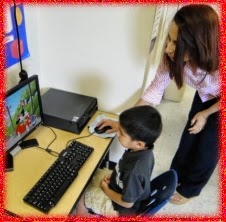Physcial Context includes children's gross (Large Muscle) and fine (Small Muscle) motor skills.Children master increasingly sophisticated tasks and again personal responsibility for their own physical needs,such as dressing themselves,arrange their belongings,tieing shoes and buttoning shirt etc.As children learn what their bodies can do, they gain self confidence in turn. the more they can do the more willing they are to try new and challenging tasks.And brain research shows that moving the body literally wake up the brain.
Physical Development of the preschool children and role of a preschool teacher
- Preshool Children are extremely active.They have good control of their bodies and enjoy activity.So, as a teacher provide plenty of opportunity for the children to run,climb and jump.Arrange these activities as much as possible,so that they are under your control.
- Because of their inclination toward bursts of activities,Kindergarteners need frequent rest periods.So, as a teacher schedule quite activities after strenous ones.Have rest time.
- Preschooler's large muscles are more developed than those that control fingers and hands.Therefore preschoolers may be quite clumsy at or physically incapable of such skills as tieing shoes and buttoning shirt.So,as a teacher avoid too many small motor activities sucha as pasting paper chains.Instead provide them big brushes, crayons and tools.
- Young children fint it dificult to focus their eyes on small objects this is because their eye and hand co-ordination may be imperfect.So, as a teacher the necessity for the children to look at small things should be minimized.The reason behind the large print in children's book is due to their incomplete eye development.
- Although the children's bodies are flexible and resilient, the bones that protect the brain are still soft.So, as a teacher be extremely worry of blows to the head in games or fights between children.
- Although boys are bigger,girls are ahead of boys in practically all other areas of development , especially in fine motor skills. So, as a teacher don't be surprised if boy are clumsier at manipulating small objects.It may be desirable to avoid boy-girl comparisons or competition involving such skills.


.jpg)
























.jpg)
.jpg)